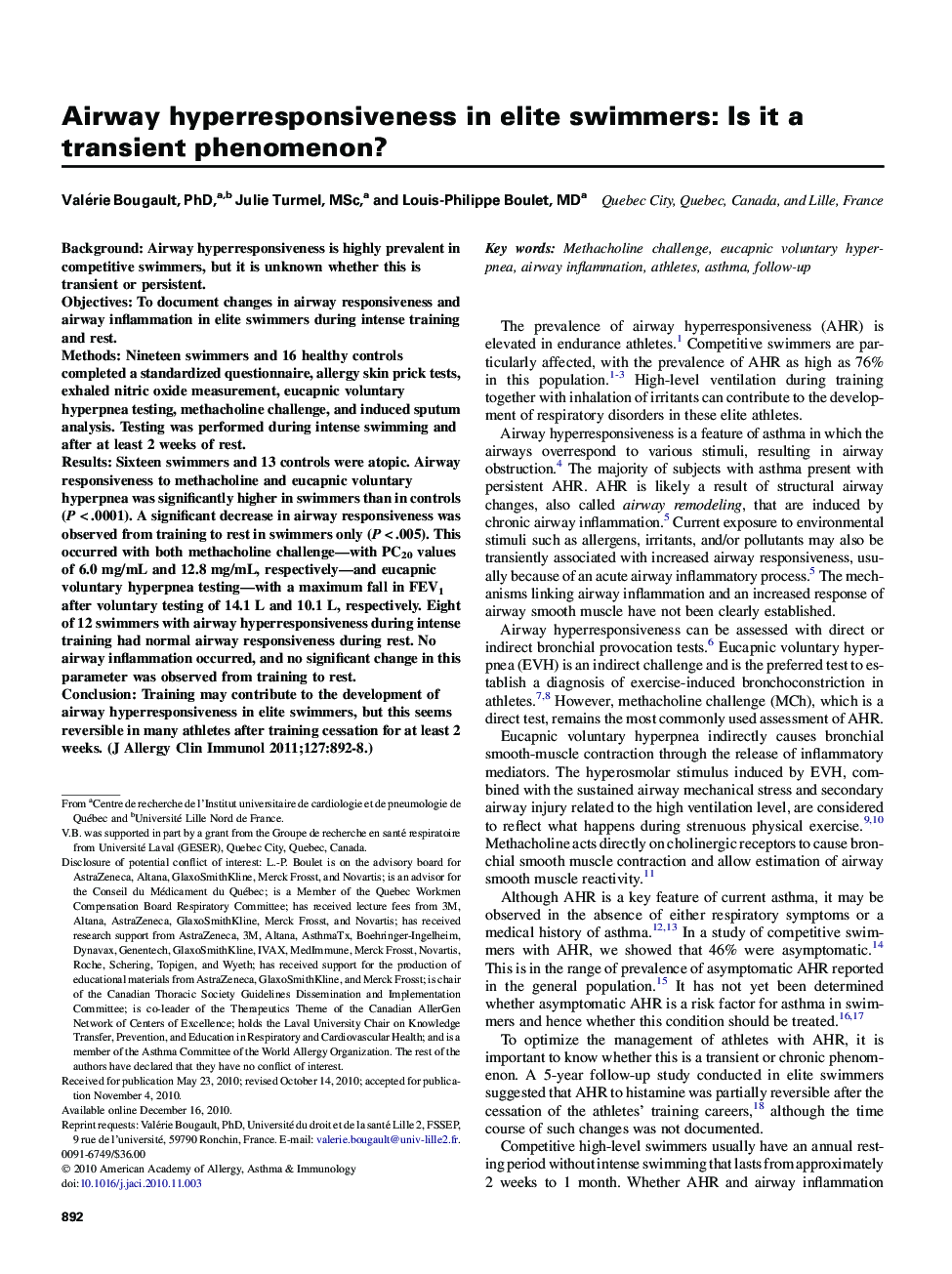| Article ID | Journal | Published Year | Pages | File Type |
|---|---|---|---|---|
| 3198905 | Journal of Allergy and Clinical Immunology | 2011 | 7 Pages |
BackgroundAirway hyperresponsiveness is highly prevalent in competitive swimmers, but it is unknown whether this is transient or persistent.ObjectivesTo document changes in airway responsiveness and airway inflammation in elite swimmers during intense training and rest.MethodsNineteen swimmers and 16 healthy controls completed a standardized questionnaire, allergy skin prick tests, exhaled nitric oxide measurement, eucapnic voluntary hyperpnea testing, methacholine challenge, and induced sputum analysis. Testing was performed during intense swimming and after at least 2 weeks of rest.ResultsSixteen swimmers and 13 controls were atopic. Airway responsiveness to methacholine and eucapnic voluntary hyperpnea was significantly higher in swimmers than in controls (P < .0001). A significant decrease in airway responsiveness was observed from training to rest in swimmers only (P < .005). This occurred with both methacholine challenge—with PC20 values of 6.0 mg/mL and 12.8 mg/mL, respectively—and eucapnic voluntary hyperpnea testing—with a maximum fall in FEV1 after voluntary testing of 14.1 L and 10.1 L, respectively. Eight of 12 swimmers with airway hyperresponsiveness during intense training had normal airway responsiveness during rest. No airway inflammation occurred, and no significant change in this parameter was observed from training to rest.ConclusionTraining may contribute to the development of airway hyperresponsiveness in elite swimmers, but this seems reversible in many athletes after training cessation for at least 2 weeks.
